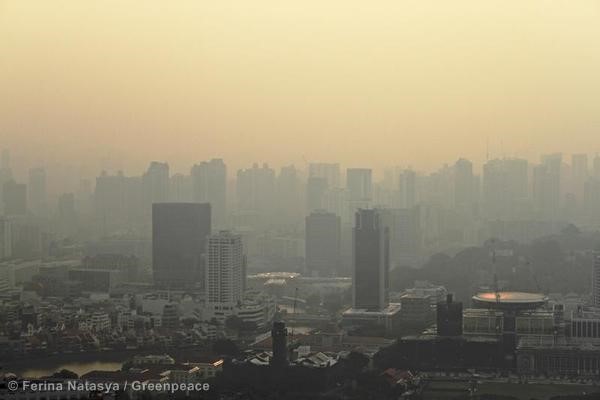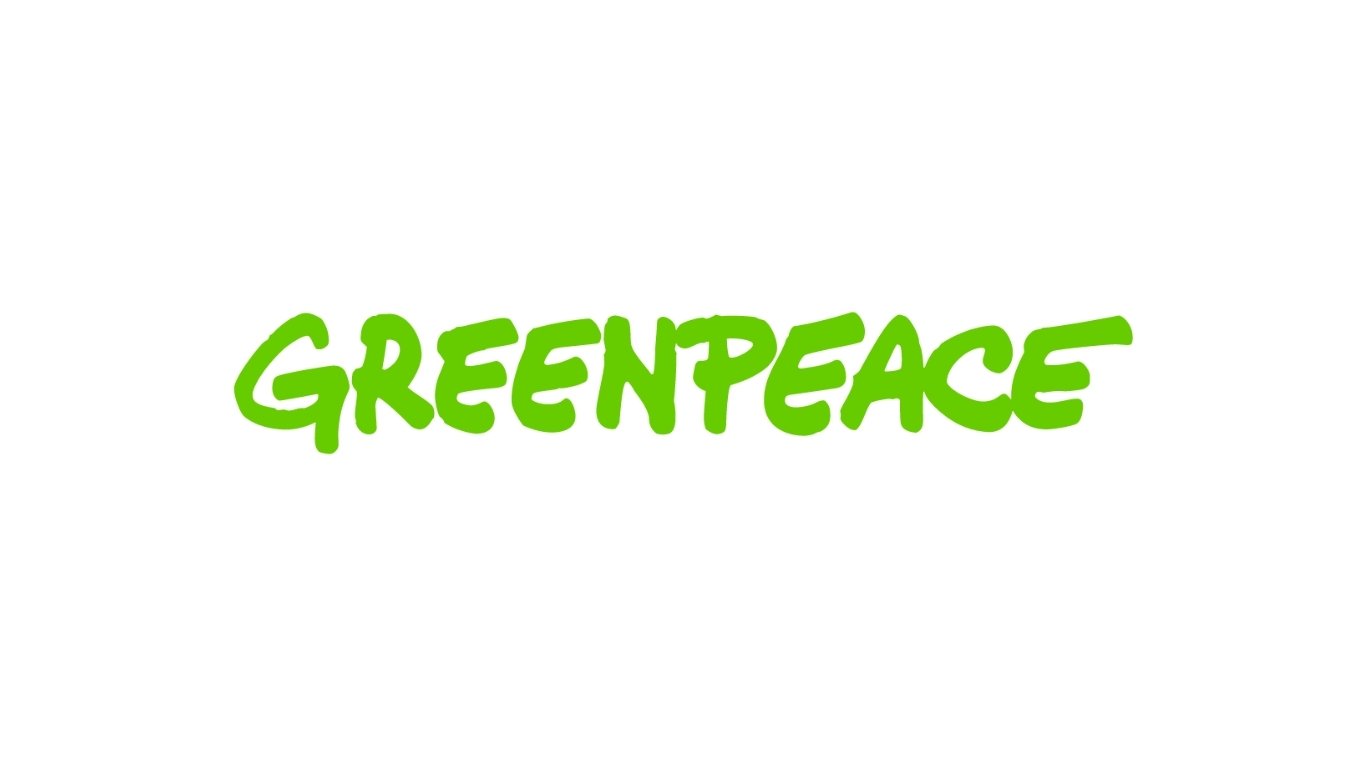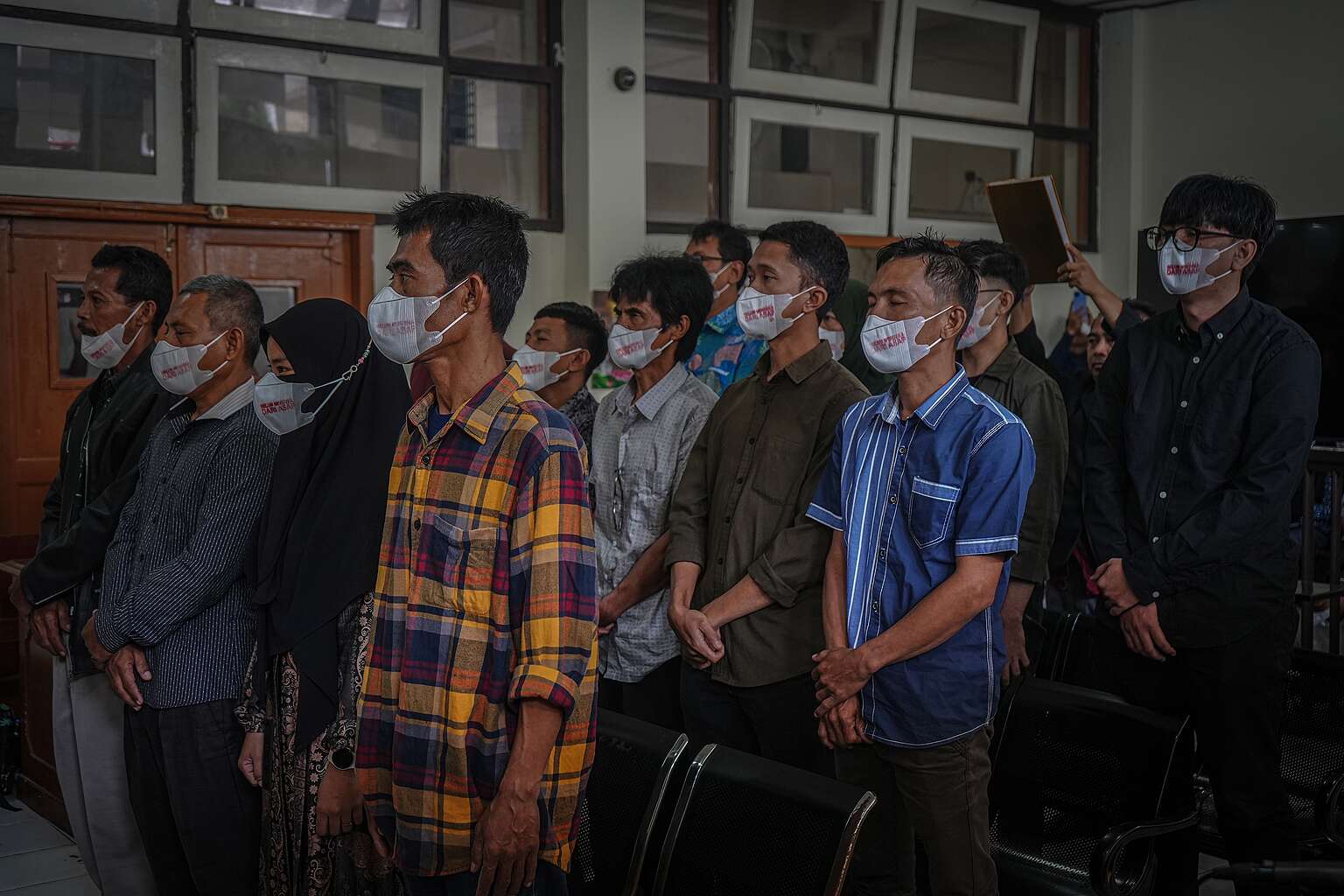The exhibit, “Right to Clean Air–The Art Exhibition”, mounted at the Bangkok Art and Culture Center was organised with Thai artist Ruangsak Anuwatwimon. It features installations created out of dust from air pollution gathered from the country’s most polluted provinces.
The events are part of a series of public activities organised by Greenpeace Southeast Asia to raise public awareness about air pollution, and shed light on the need for urgent solutions to upgrade the country’s Air Quality Index (AQI) by monitoring and regulating air pollution with microscopic dust particles smaller than 2.5 microns. The particles, called PM 2.5, poses serious public health hazards.
Anuwatwimon, who collaborated with Greenpeace on this art advocacy said: “Thai people currently don’t have accurate information of pollution levels in the air they breathe. Through my art, I want to make the invisible visible. The hardest part is to make people realise that there is something toxic in the air they breathe. In some areas, people cannot speak about their own health. If we cannot speak out about our own problems, what else in this country we can do? If our air is polluted, how can we survive? I believe we should have the right to breathe clean air.”
The art installations “Memory” and “Monolith Souvenir” are made from dust collected from various provinces throughout Thailand. They are displayed at the event to illustrate the impacts of air pollution. “Memory”, a work in paper mache, features life-sized depictions of a child, a mother and an elderly man, in a line. It represents those impacted by air pollution from various sources. “Monolith Souvenir” reflects the impacts of pollution on the environment and the injustice faced by communities victimised by air pollution. These 20 pieces of resin containing leaves and plants contaminated with pollution, acts as a condemnation of the system put in place by polluters.
According to a World Bank study [1] , Air pollution in Thailand currently causes an estimated 50,000 premature deaths per year. Thailand’s population continues to be exposed to air pollution levels way above standards set by the World Health Organization (WHO). In 2017, the levels of air pollution recorded in 19 monitoring stations in 14 cities across Thailand exceed WHO’s safety limits [2].
The two most critical cities with the highest one-year average concentrations of PM 2.5 were Saraburi (36 µg/m3) and Thonburi, Bangkok (31 µg/m3), both recorded pollution levels over three times higher than WHO limits. Other cities at risk include Samut Sakhon, Ratchaburi, Khon Kaen, and Chiang Mai, which showed alarming readings between 25-30µg/m.3 All 14 cities monitored exceeded WHO limits. Moreover, nine out of the 14 cities exceeded the national standard’s annual air pollution safety limits.
“The impacts of particulate pollution, specifically PM 2.5, on public health is unseen and ignored by many, including the government,” said Chariya Senpong, Climate and Energy Campaigner, Greenpeace Southeast Asia. “Greenpeace is calling upon the Pollution Control Department to impose stricter standards on particulate matter in the country’s Air Quality Index. Greenpeace is asking the agency to monitor and enforce preventive measures on PM 2.5 in order to protect public health.”
“People should not have to risk their health and wait for years and years for the government to act and seriously improve air quality to save the lives of tens of thousands of Thai citizens,” Senpong added.
“Right to Clean Air – The Art Exhibition” is taking place from 16 to 28 January 2018, at the 1st floor of Bangkok Art and Culture Centre (BACC). Aside from the main exhibition, there are forums and talks by experts, on air pollution and its solutions. Other side events include a photo exhibit on air pollution. All activities are open to the public. For more details and for the daily schedule, please visit www.greenpeace.or.th.
Notes to editor:
- http://documents.worldbank.org/curated/en/781521473177013155/pdf/108141-REVISED-Cost-of-PollutionWebCORRECTEDfile.pdf
- Situation of Thailand’s air pollution in 2017, an analysis by Greenpeace Southeast Asia: www.greenpeace.org/seasia/th/campaigns/Urban-Revolution/Air-Pollution/Right-To-Clean-Air/City-ranking/2017
- Public can take part in signing petition to the Pollution Control Department to incorporate PM2.5 as part of their complete assessment (monitoring and reporting) of air quality index (AQI) at www.greenpeace.or.th/right-to-clean-air.
Press contact:
Ms Pichmol Rugrod, Communication & Digital Support Officer, Tel. 063-906-4971, Email: [email protected]

End the air pollution crisis once and for all, because no-one should have to worry about what they breathe.
Get Involved


